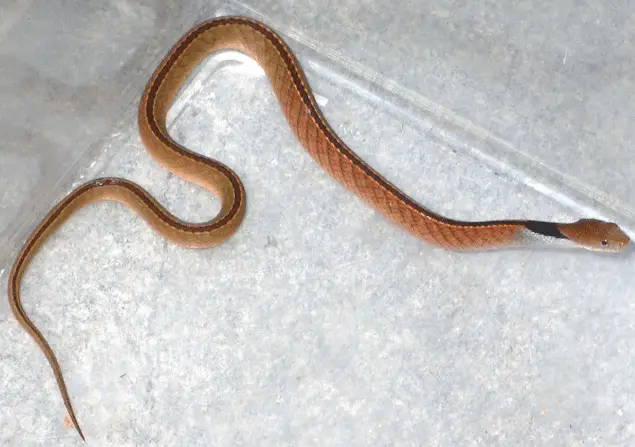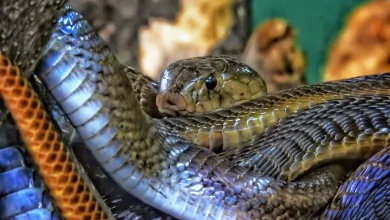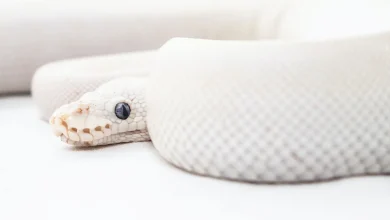Blue Necked Keelback Envenomation
The Blue-Necked Keelback (Rhabdophis rhodomelas)
This is a snake found in the deep southern regions of Thailand that I haven’t written about before. However, a conversation last night reminded me to share some information online as a warning to others who might encounter or even keep this snake in captivity.
The Blue-Necked Keelback Rhabdophis rhodomelas is a small colubrid snake that appears innocuous enough but has the potential to cause serious damage. I was reading a scientific paper from a man in Singapore who had one captive, that bit down on his finger and chewed for a bit before releasing him. This 120 kg man (264 lbs) fell to the floor a minute after being bitten by this snake. It would be great if you’d share this page with anyone that you know who keeps snakes, as this snake is frequently regarded as harmless, like the Rhabdophis subminiatus (Red-necked keelback) once was.

Thai Language: Ngu Rang Hae Lang Sorn
Length:
This species can grow up to 75 centimetres long and has a distinctive colouration. The body of this species is predominantly orangish brown to pinkish brown, with a black or dark brown dorsal line running down the back. The stripe is surrounded by a series of light-colored dots that add to its visual appeal. The stripe widens as it reaches the neck and becomes a dark chevron on top, creating a stark contrast with the lighter colours.
The side of the neck is usually a light bluish shade, which creates a lovely gradient with the darker dorsal marking. Some individuals may have faint or indistinct bars along the side of the body. This adds to the complexity and variation of the pattern. The combination of bold markings with subtle colours makes this species unique and attractive in its natural habitat.
Range:
Throughout Southeast Asia, the species can be found in many parts, including Indonesia, Singapore and Malaysia. It is also common in southern Thailand. In this region, the species is found in freshwater habitats, such as rivers and streams, swamps, and flooded forests, where dense vegetation, slow-moving waters, and gentle currents provide ideal conditions for shelter and feeding. The climate across this range, characterised by high humidity and consistently warm temperatures, supports the species’ lifestyle and biological needs. Local population densities can vary, despite being widespread, depending on the habitat available, human activity and environmental conditions.
Habitat:
The Blue-Necked Keelback are typically found in lowland forests, where it thrives in humid and moist environments. It prefers habitats near water sources, such as rice paddies, swamps, streams and flooded areas. The aquatic and semi-aquatic habitats provide ideal hunting grounds for the frogs and other prey, as well as plenty of vegetation to cover and protect.
The species thrives in areas where terrestrial and aquatic resources are abundant. The semi-aquatic lifestyle of this species allows it to easily move between land and water. This makes it highly adaptive to seasonal changes in the water level.
Active Time?
Food:
The Blue-Necked Keelback eat primarily amphibians. Frogs and toads make up most of their diet. Its hunting strategy suits environments with a lot of amphibians, such as wetlands and forests. Its preference for toads is a unique advantage as it can store the toxins of toads within its body. This makes it poisonous to any predators.
Keelbacks, even with this defensive mechanism, are vulnerable to many natural predators. Predators include larger snakes, monitor lizards and wading bird species such as storks or herons. The toxins that they remove from their prey can deter or reduce the chances of them being eaten.
Defensive Behaviour:
The Blue-Necked Keelback have a unique combination of venomous and poisonous defences. They do not possess fangs but secrete venom into their saliva, which is then delivered to the prey via the bite wound. This species, in addition to being mildly poisonous, can also sequester toxins from the toads that it eats. The toxins they store make them unpalatable to predators or even dangerous. This provides an additional layer of protection.
Venom Toxicity:
It is a species with venomous rear-fanged stingers that can deliver bites of medical significance. It should never be handled due to its potential health risks.




